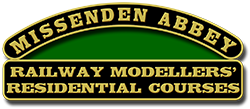 Projects
Projects
- Some light weathering by Ian Rathbone
- Andrew Thompson shows us his approach to weathering
- A beginner’s guide to weathering by Chris Hopper
Guides
Some step by step weathering guides by Mick Bonwick, these have been reworked from Mick’s RMweb blog postings:
- Weathering an 08 shunter
- Weathering a Southern Pull Push Set 732
- Weathering a Hornby Peckett W4
- Land Rover Series 1
- Accurascale Cemflo
Weathering Techniques
There are many ways of weathering things and no two people will do everything the same way. Favoured materials and tools will differ from person to person, some will want “used but clean” and others might favour “nearly condemned”.
One common factor, though, is that a mental image exists of what the subject needs to look like when finished.
For modellers who don’t really know where to start, or those who have an idea, but can’t choose from the confusingly vast array of Youtube videos and RMweb posts, let me offer a few suggestions.
- Start simple. Try a couple of things to see if they suit your temperament, ability, eyesight, dexterity, toolkit, patience, workspace and timeframe.
- Use a reliable reference. Work from photographs rather than imagination or memory. If you weather something by thinking that it should like this because of that, then you will end up with something that looks as if you imagined it. Practice applying a wash, try a couple of pigments.
- Develop skills by practising on small items. These are usually cheaper to buy in the first place and quicker to clean up if you make an absolute mess. Don’t worry about ruining something, be aware of the properties of the materials you are using and have the necessary clean-up stuff beside you just in case.
- Keep a record. Make a note of what you use for each subject and take a photograph or two while you work. You will need to remind yourself, at some stage, how you did that.
- Create a basic palette. Select a few colours that suit you and use just those to begin with. Avoid collecting!
One way of eliminating confusion is to find a video clip, magazine article or book that shows a result that you like and then follow that author/poster and their choice of materials, tools and techniques. If you still can’t decide then I suggest you seek out material by Martyn Welch, Tim Shackleton or George Dent in publications, or KNP and NHY581 on RMweb. There are many others, but these few will restrict your choice and still provide inspiration.
- Brushes & their uses – It’s important to know what tool to use when tackling any job.
- Highlighting grilles – Weathering not only makes our models more realistic but can also highlight the surface detail of a model.
- Weathering with wash and pigment – An exercise in weathering limited to two products, a wash and pigment (weathering powder).
- The interior of a tender – Tenders have to contend with not just the weather but the corrosive effects of coal and water.
- Weathering Ballast – It is not just rolling stock that shows the effects of weather.
- Blob Removal – How to remove those blobs of wash and paint.
- Bachmann Tidemark Warning – A warning for those weathering Bachmann locomotives.
Resources
- Airbrush Cleaning – Keeping your airbrush clean is essential to its health and the quality of your result.
Articles published on the Accurascale website, during their “Let’s Get Involved” initiative:
GWR Modelling website
Mick Bonwick’s Projects
